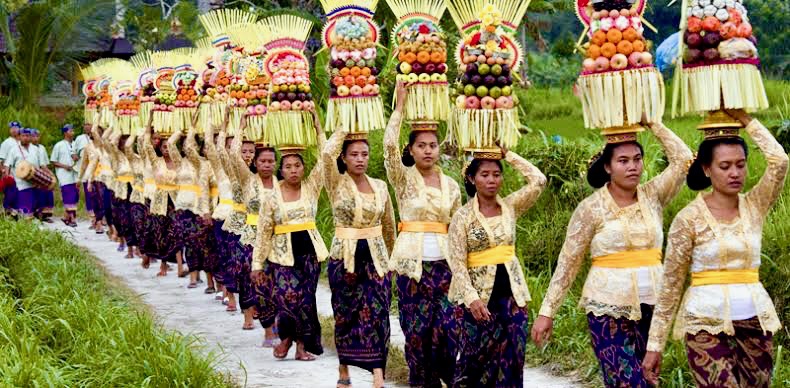Galungan is the most important religious and civic event in the Balinese calendar, celebrated on November 10 -20, 2021. This ten day fiesta celebrates both the creator of the universe, Ida Sang Hyang Widi, and the spirits of honoured ancestors. Galungan marks the time of the year when the spirits of the ancestors visit the earth. Galungan has some similarities to India’s Diwali Celebration as both celebrate the triumph of dharma (good) over adharma (evil). But Galungan is so much more. This ten day Galungan event is punctuated by Kuningan. The finale of Kuningan is a day of relaxing with families and fiestas — but no religious observance. Kuningan means the color yellow in Balinese. Naturally, everyone wears yellow to mark Kuningan. [More information on the creator of the universe, the Hyang, is available on this website, templesandtribes.net. See the article, “Enter the Hyangs …” under Bali Culture and Traditions section]
November, 2022 by Made Victor (Bali name of writer Zephyr Carlyle): Om Swastyastu, Rahajeng Galungan Dan Kuningan Dumogi Shanti lan Jagaditha. In Balinese with a strong Sanskrit influence, some of which will recognizable to Western yoga heads: Welcome and Good Day! Happy Galungan and Kuningan. May there be peace in the Universe.
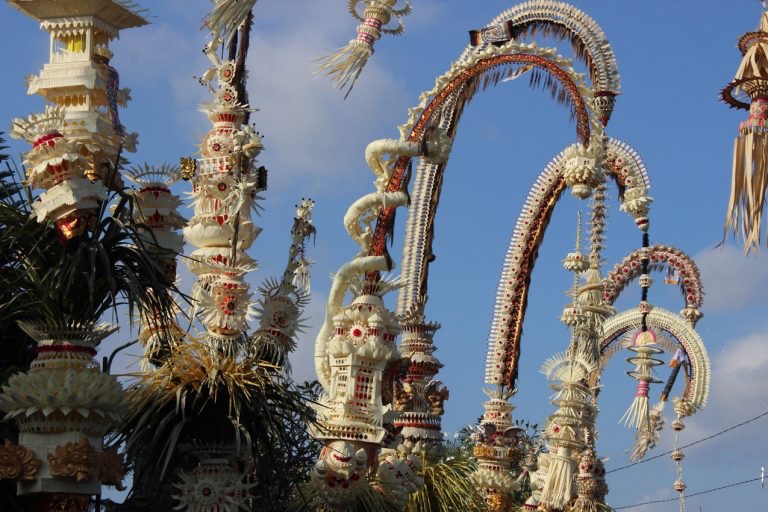

You know it is Galungan time as the whole island is bedecked in glamorous religious ornaments. Most notable are the penjor, bamboo poles decorated with offerings, that are erected on the side of the street, at the front of homes and shops.
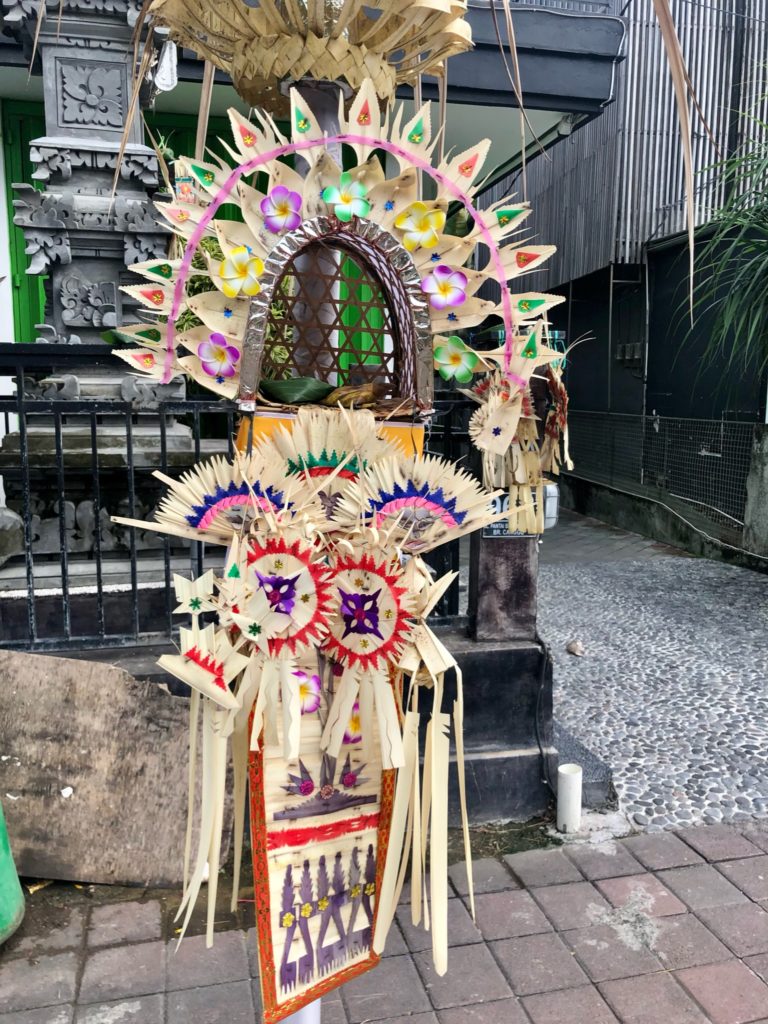

Galungan begins on the Wednesday of Dunggulan, the 11th week of the 210-day Balinese pawukon calendar, otherwise known as November 10th this year, 2021. The ancient, traditional calendar allows for one Galungan every seven months or so. Thus, Bali celebrates Galungan twice in one Western calendar year. All schools across Bali are closed for two weeks for this holiday season. For more information on the Bali pawukon calendar, see the article, “How Many Ways to Count the Days…” under Bali Culture and Traditions section in this website, templesandtribes.net A number of days around Galungan and Kuningan have special names and are organized around particular activities. Here is just a sample of some of the days:
Penyekeban – Cooking of bananas for offerings (three days prior to Galungan)
Families begin their preparations for Galungan. “Penyekeban” means “the day to cover up “, as this is the day when green bananas are covered up in huge clay pots to speed their ripening.
Penyajaan – Making of fried rice cakes, called jaja, for offerings (two days prior)
A day of introspection but leaving plenty of time to make the Balinese rice cakes known as jaja. These colored cakes, made of fried rice dough are used in offerings and eaten on Galungan.
Penampahan – Sacrificing of pigs or chicken for feasts (one day prior)
Animals are sacrificed as special offerings which are meant to get rid of negativity in both the bhuana agung (the macrocosm, the world around us) and the bhuana alit (microcosm, the world within us); the meat is afterwards prepared and cooked for traditional Balinese dishes such as lawar, (cooked rice mixed with animal blood) babi guling, (roast suckling pig) and satay (think: Thai food)
The Day of Galungan
This day is the climax of the Galungan observance. Balinese Hindus return to their ancestral villages to pray at the temple and make offerings to their visiting ancestors. Women are seen carrying the offerings on their heads, while men bring palm fronds. The Balinese put on their finest traditional clothes for temple prayers with their families and bring offerings to share and enjoy after praying. It is a day for the Balinese to remind themselves of the long lineage of their ancestors and celebrate both the departed ancestors and their living religious heritage. All the local temples are very crowded and colorful on Galungan.
Enter the Barong
A “Barong” is a divine protector in the form of a magical beast. According to Wikipedia and other internet sources; the Barong is a “panther-like creature.” Personally, I don’t see a panther. I see a water buffalo. The Barong is the king of all the Spirits and the leader of those who is the “hosts the good”(?) The Barong perform the Ngelawang ceremony; a dance of exorcism. The Ngelawang is performed in the all Hindu villages and in numerous locations throughout the larger towns; everyday during this extended celebration time. In the Ngelawang, the Barong go from house to house. This procession is followed by kids playing traditional Balinese music instruments. The Barong parade through a neighborhood and stop in front of each house. The residents give an offering called “canang” with “sesari” (money) placed on top. After receiving the offering. the Barong will dance and bless the house and the resident family.

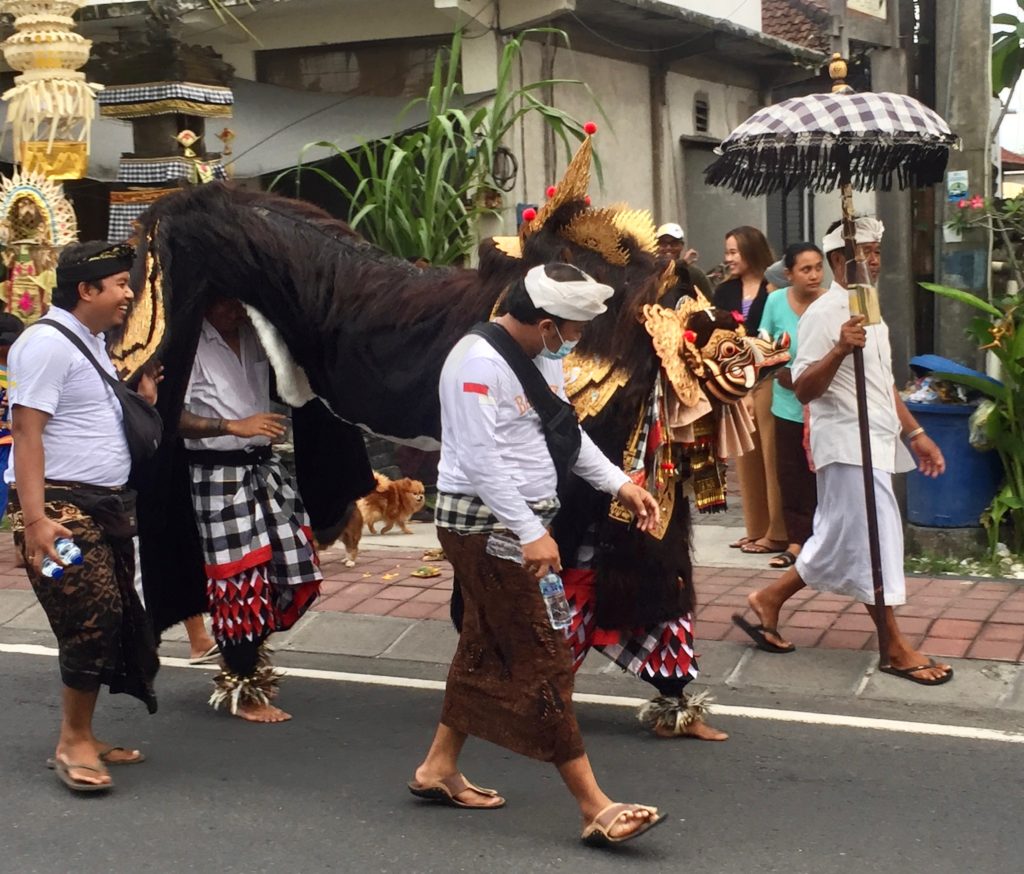
The Barong is invited into houses as he makes his way through the village. It is believed that his presence is meant to restore the balance of good and evil in a house. The residents of the house will pray to the gods before the dancing Barong, who will afterwards give a piece of his fur as a keepsake
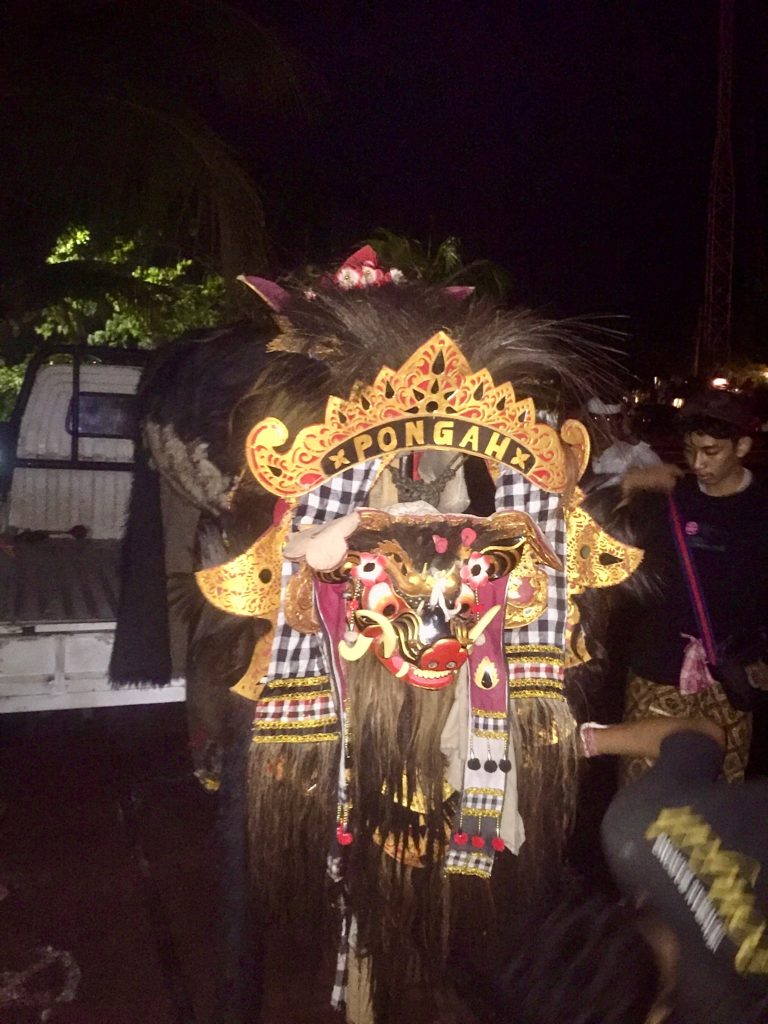
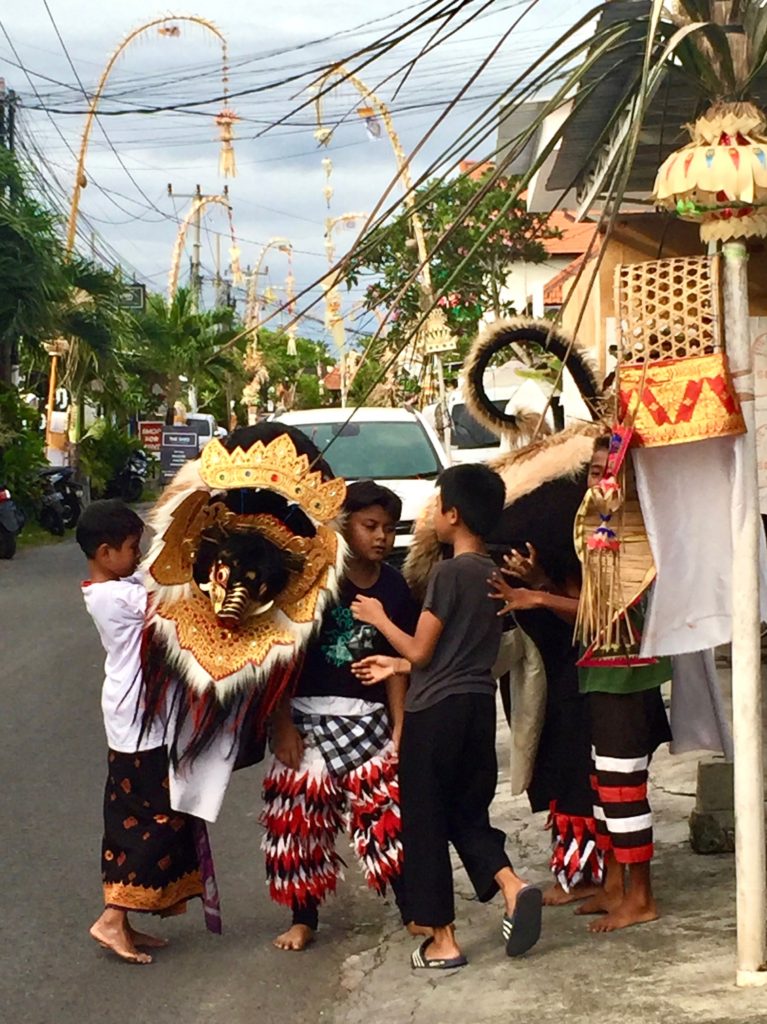
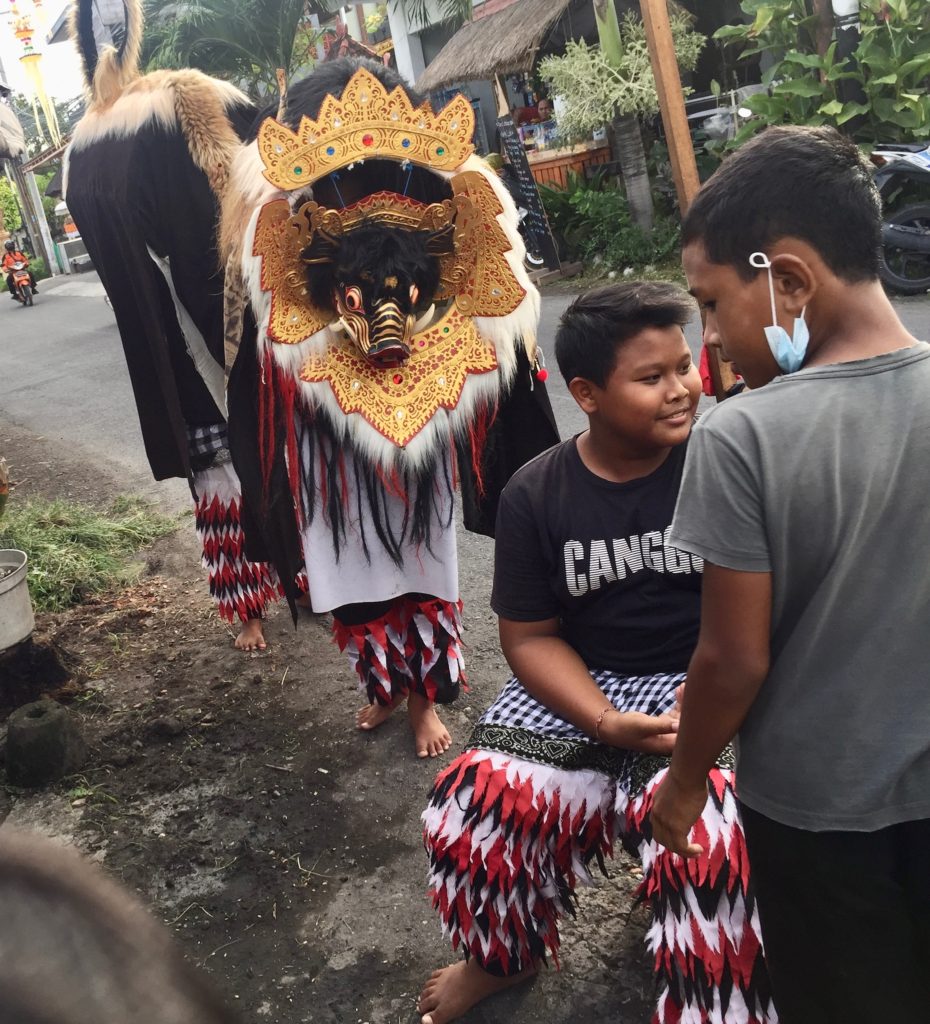
Kuningan – The Day of Yellow
Kuningan is the culminating event of Galungan. And it is a yellow day as “kuning” means yellow in Balinese. On Kuningan, the visiting ancestors return to heaven. The living make a final tribute to the ancestors in the form of farewell offerings. The farewell tokens include yellow rice, commonly from turmeric. Kuningan is derived from the word kuning which means yellow. The offering is placed in a small “bowl” made of coconut leaves. Other common offerings includes seeds, fish and fruit like papaya and cucumber. The yellow rice is the symbol of human’s gratitude to God. The bowls are decorated with a small figures of shadow puppets which represent angels.

Bonus: The Historic Origins of Galugan
Naturally, Galungan has the greatest epic story attached to this most sacred occasion:
During the era of the Majapahit empire** , a predominantly Hindu empire, there was a strong and frightening figure known as Mayadenawa – the son of a malevolent king, whose powers knew no bounds.
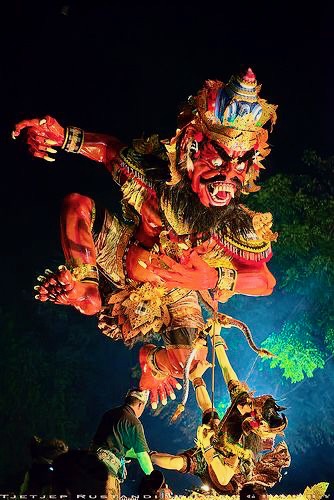
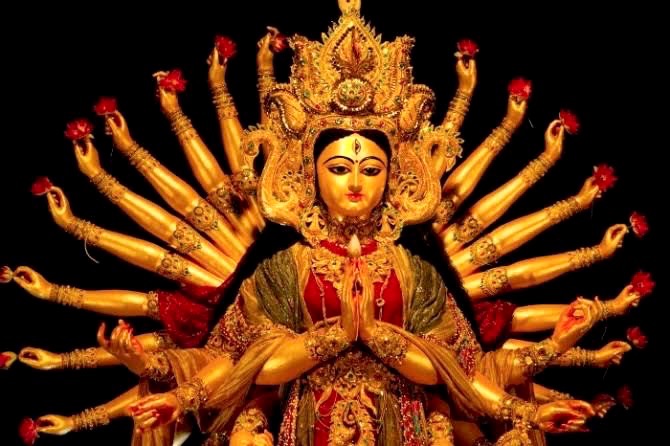
Many said in fear that even the great Majapahit army could not defeat him. Mayadenawa wreaked havoc amongst the Hindu, destroying temples, and denying worship. The Hindu people appealed to the gods, and it was the Hindu God Indra who answered.

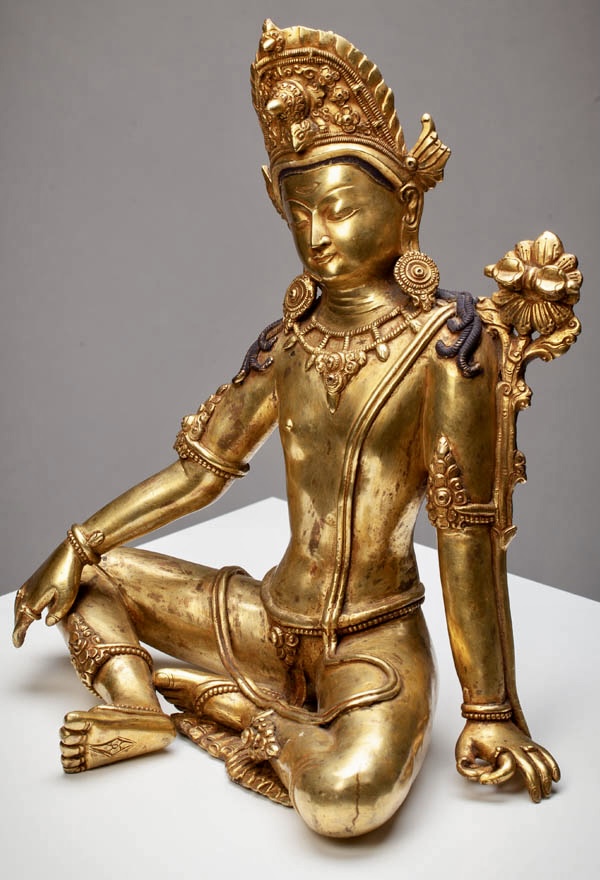
Lord Indra is an early, very ancient, Hindu deity. He is the king of Svarga (Heaven) and the Devas (gods). Indra is associated with lightning, thunder, storms, rains, river flows and war. It was Lord Indra himself who descended from the heavens and began a mighty war against the vicious – and godless – Mayadenawa

. Battle after battle, Indra and his army fought the horrific character – but at the end, Indra and the Gods were victorious over Mayadenawa.

- ** The Majapahit Empire was a Hindu dominion, based in Java, but the empire ruling over large sections of S.E. Asia from the 13th -16th century. The Majapahits fell to invasions by the Islamic Sultanate of Molucca, and other Islamic satraps. The remaining Hindu Majapahit fled east to their last stronghold, the small island of Bali; or retreated the outlying hills of Java. To this day, there are only two Hindu sections of Indonesia: Bali plus a few, small mountainous areas of Java. The Islamic religion is very predominant in almost all of the rest of the country.
Please sign up below and subscribe to this website, a travelogue and literary journal. You will receive email notices of all new articles posted, about three a month. Email or other information will never be sold or used in any other way.
